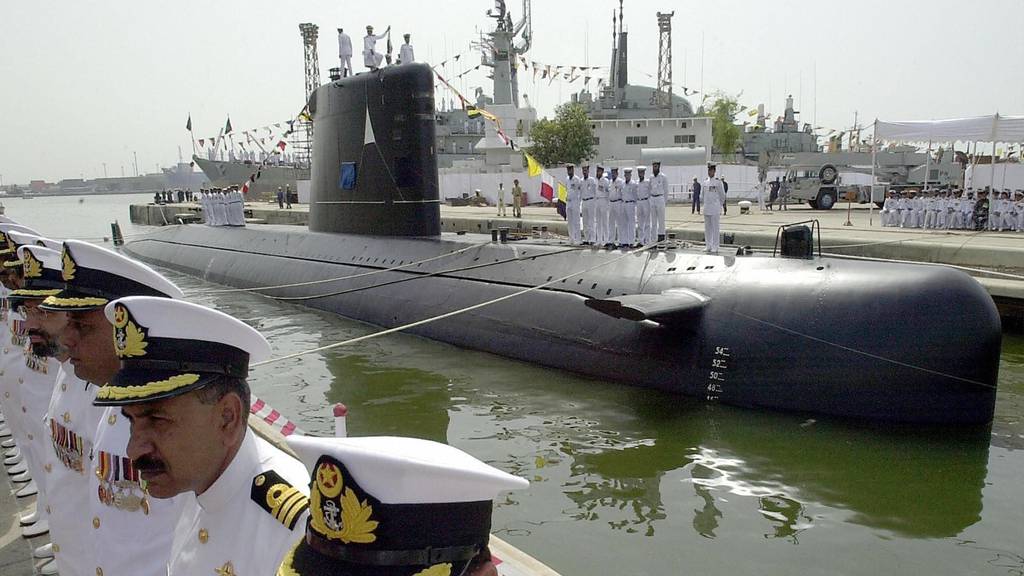ISLAMABAD — Pakistan on Tuesday unveiled a very low frequency (VLF) communication facility that will enable it to communicate with deployed submarines.
Mansoor Ahmed, a postdoctoral research fellow at the Harvard Kennedy School's Belfer Center and expert on Pakistan's nuclear program and delivery systems, said the facility is vital for command and control of submarines carrying a nuclear deterrent patrol, and the announcement essentially confirms Pakistan has established a preliminary, sea-based arm of its nuclear deterrent.
"The Naval Strategic Force Command inaugurated in 2012 is now closer to being the custodian of the country's second-strike capability," he said.
According to an official news release by the military's Inter Services Public Relations media branch, the VLF facility is at a new base, PNS Hameed, near Pakistan's main port of Karachi, and is the first of its
kind in the country.
"The secure military communication link in the VLF spectrum will add new dimensions by enhancing the flexibility and reach of submarine operations," the news release said.
Present at the unveiling were Chairman of the Joint Chiefs of Staff Committee Gen. Rashad Mahmood; Chief of Naval Staff Adm. Muhammad Zakaullah; Lt. Gen. Mazhar Jamil, the director general of the Strategic Plans Division that overseas all aspects of Pakistan's nuclear program; and Shahid Nabeel chairman of the National Engineering and Science Commission (NESCOM). The National Defense Complex, a branch of NESCOM, developed Pakistan's Hatf/Vengeance VII Babur cruise missile.
Ahmed said Pakistan likely will deploy a nuclear-armed, sub-launched variant of Babur "during the next decade."
The Babur is similar to the United States' BGM-109 Tomahawk and has long been speculated to be modified for launch by Pakistan's three French-designed Agosta 90B submarines, thereby offering the shortest route to a second-strike capability.
A dedicated nuclear role places an additional burden on the submarines, however, with the two Agosta 70 subs near obsolete.
Author, analyst and former Australian defense attaché to Islamabad, Brian Cloughley, said Pakistan's submarines are the "only means that Pakistan will have to seriously counter the Indian Navy. No matter
how professional the surface fleet might be — and it's very impressive — it's tiny and would be the target of concentrated Indian strikes."
Therefore, a continuous at-sea deterrent capability may only be realized once the eight Chinese-designed, AIP-equipped submarines on order begin to commission from 2022 onward.
However, according to Ahmed, a "dedicated VLF facility will ensure that Pakistan has operationalized the naval leg of its triad." He also noted that Pakistan is playing catch up to archrival India, which "has already commissioned a similar, dedicated communications facility in the recent past."
Regarding VLF communication, Cloughley said the signals "can penetrate only about 20 meters," meaning "the subs have to come up from the depths" closer to the surface.
Although this is "better than having to surface or send up an antenna on a float," the Indians are "much more advanced with their new site" compared to Pakistan’s VLF capability, he added. "The Indians have become more sophisticated and now have an [extremely low frequency] facility," which is kept under wraps and "apparently very effective."
In contrast to VLF radio signals, ELF signals can penetrate hundreds of meters below the sea surface but cannot transmit as much information as VLF signals. ELF signals can therefore be used to summon a
submerged submarine closer to the surface so it can receive more detailed messages via VLF radio.
Pakistani subs will have to venture closer to the surface at prearranged times to check for VLF communication signals.
Nevertheless, Ahmed said establishing the VLF facility was "logical" for Pakistan, as it will "reinforce the message that the country is investing in maintaining a credible and survivable nuclear deterrent."
Usman Ansari is the Pakistan correspondent for Defense News.








